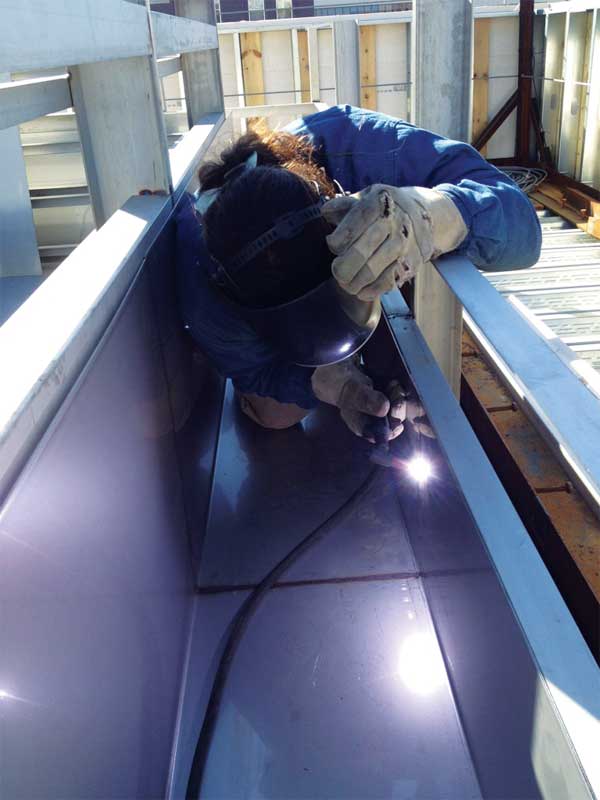
The mechanical room was placed directly below the pool creating a streamlined recirculation system that minimized the need for any special mechanical engineering. The design takes advantage of the building’s existing structure to reduce cost and maximize efficiencies. The smaller pool size was optimal, as the local building code requires 1.2 m (4 ft) of deck around the entire pool, which was easy to include beyond the pool’s vanishing edge. It also provided plenty of room for an outdoor cooking, pergola, and seating area adjacent to the pool.
The installation
Installing elevated pools using traditional building materials such as concrete can be challenging, as they are located high up within the building. Pumping up concrete, maintaining the right moisture content, and ensuring it cures properly are all difficult factors to control, as there are always inconsistencies that need to be managed.
One of the many advantages of using stainless steel on this project was that all welding was completed in place, which allowed adjustments to be made due to any inconsistencies or changes in the structure of the building.
“Concrete vaults are often not level and it’s very difficult to adjust in these cases,” said Gregg Hendershot of Milhaus Construction in Indianapolis, Ind.
Concrete is 10 times heavier than steel; therefore, the total combined weight of the basin and the pool would require the building’s structure to be reinforced to hold the additional weight. As stainless steel is self-supporting, the pool did not require the construction of a basin. Instead, it was built solely on I-beams for structural support.
“A concrete pool would require a steel corrugated layer with an additional concrete topping slab at least 152- to 203-mm (6- to 8-in.) thick, plus waterproofing, and then the concrete vessel, which would be another 152- to 203-mm (6- to 8-in.) thick,” said Stephen Crocker with CSO Architects Inc., also in Indianapolis. “A final layer of waterproofing within the pool is also required, which adds up to a lot of extra weight.”
As a result, the cost and time involved is considerably less when installing a stainless steel pool in these elevated applications. This material is also beneficial in regions where ground shifting is a problem or seismic activity is an issue. In these cases, the structural components of a stainless steel pool move with the building, providing much more ‘give’ than rigid concrete.






